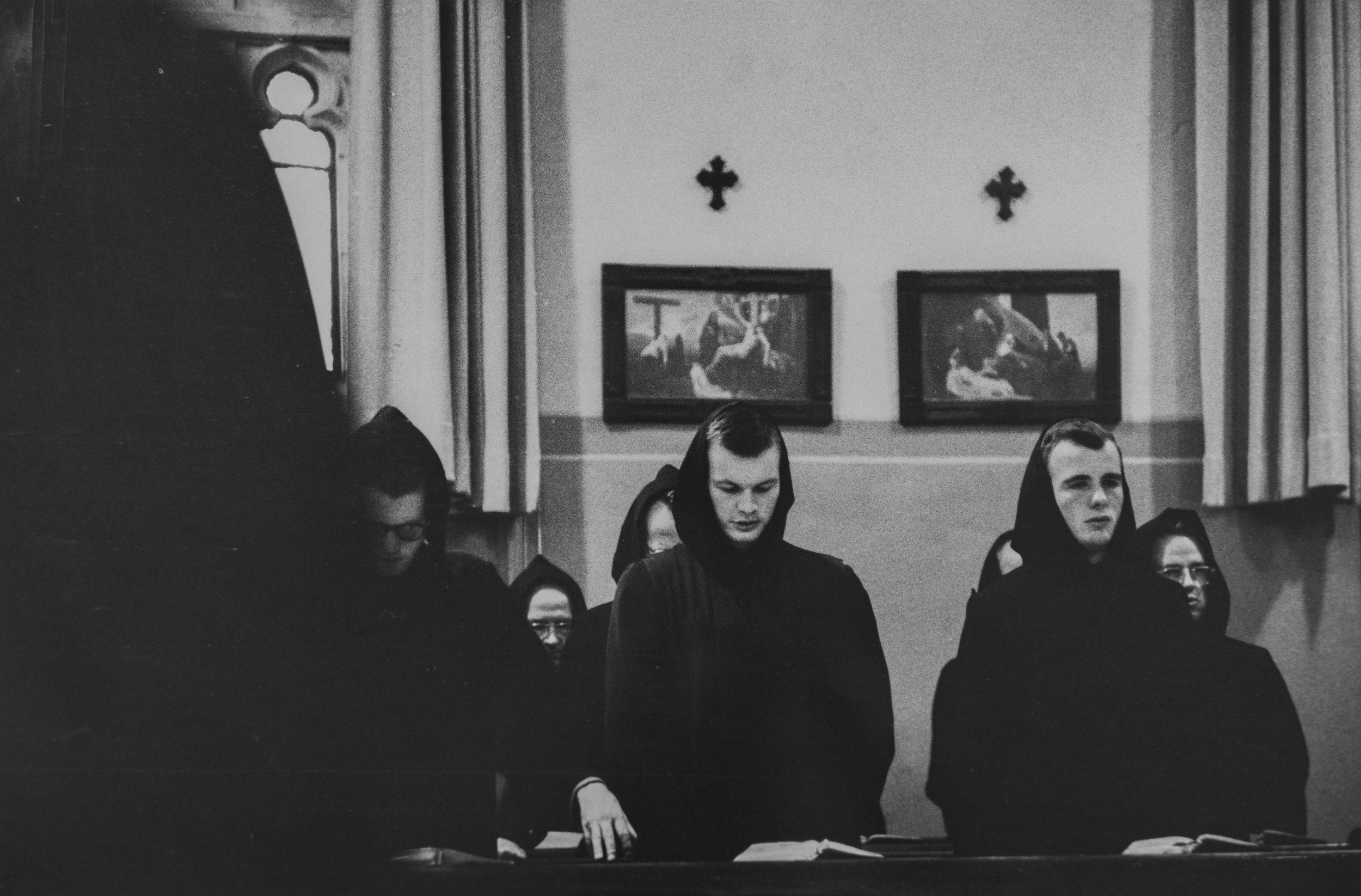
prayer
-
liturgy
-
lectio divina
-
silence
-
chant
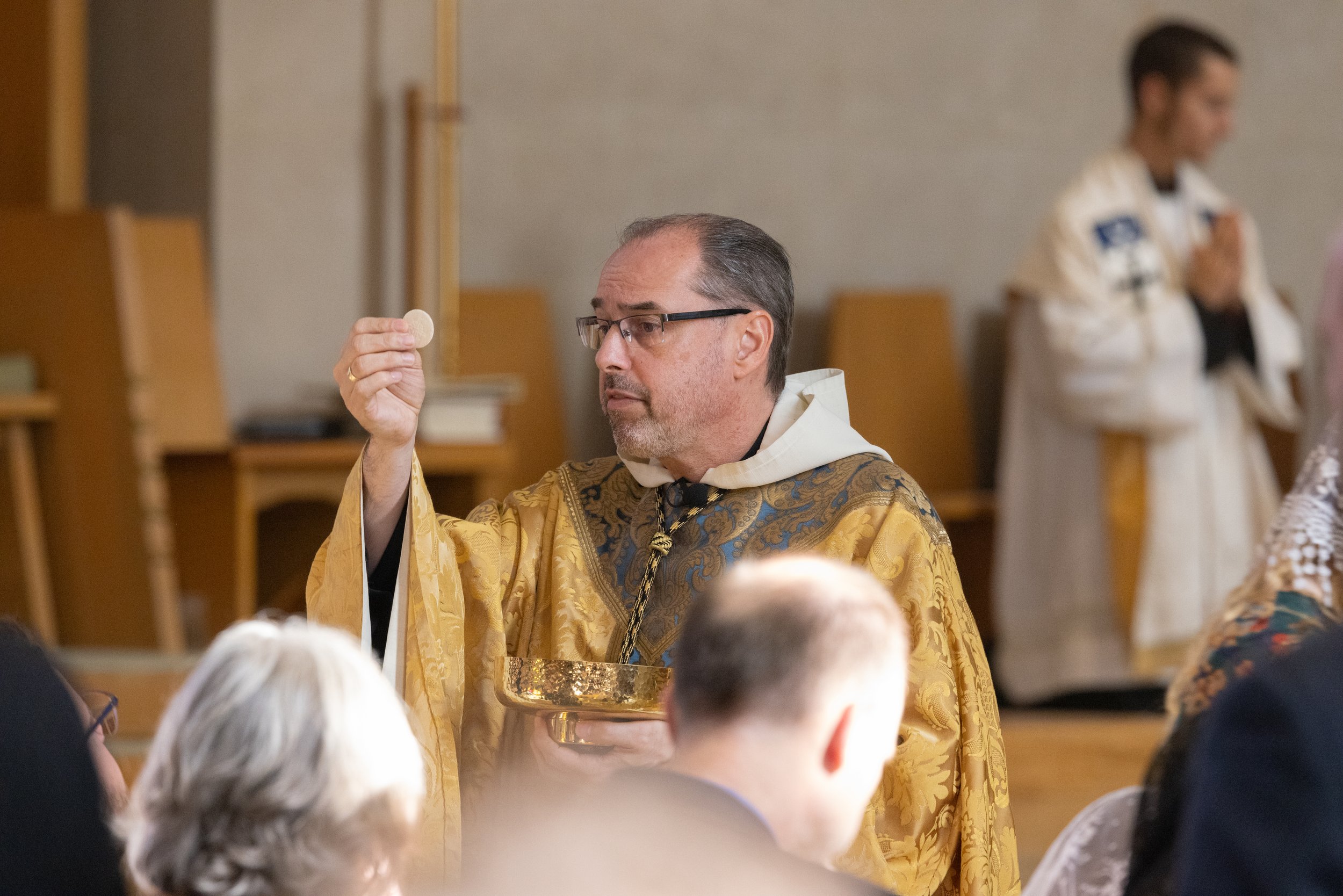
liturgy
“Let us consider, then, how we ought to behave in the presence of God and his angels” (Rule of St. Benedict, 19:6).
St. Benedict lays down four criteria by which candidates to the monastic life are to be judged: first, that he truly seeks God, that he is eager for the Work of God, for obedience and for trials (RB 58:7). St. Benedict conceives of the monk as one who first and foremost seeks God (Pr:2).
Where does the monk look for God? Everywhere: “We believe that the divine presence is everywhere” (19:1) With these few words, St. Benedict sums up the Benedictine world view. The monk sees world as revelatory: each concrete circumstance he meets in life reveals the divine presence to him. Nowhere is this clearer than when St. Benedict speaks of Christ’s presence in the monastery. Over and over again, he admonishes the monk to see Christ in each person he meets: in the abbot (cc. 2 & 63) and the guest (c. 53), in the young and in the old and sick (c. 36). Most especially, the monk finds Christ in the community’s common prayer: “Beyond the least doubt we should believe this to be especially true when we celebrate the divine office” (19:2).
The life of the monastery, like the life of the whole Church, is centered around its common prayer. Monastic life is a sacramental experience in which the monk experiences interior renewal through exterior means. And, the grace God gives him comes not primarily through subjective experience, but through the concrete reality he confronts everyday.
Christ’s presence in sacred Scripture and the Eucharist is especially revered by the monastic community. St. Benedict’s vision is of a community steeped in the Word of God, of a community which is bound together into the Body of Christ by the Word-made-Flesh. The monk is to admonished to meet Christ daily in lectio divina—his personal, prayerful reading of Scripture—and in the community’s opus Dei—the common chanting of Scripture, most especially the Psalms.
St. Benedict has few words to say about the Eucharist. The Mass and Communion are mentioned four times throughout the Rule, but always as a sort of passing remark, as though they were taken for granted. Indeed, for the Christians of the early Church, to be Christian was to take part in the Eucharist.
The monks of St. Benedict’s Abbey still foster this reverence for Christ. We recognize that Christ, while dwelling in our hearts, lives also out there: out there in our brothers, out there in the Abbot, out there in the guest. But most especially, we recognize that Christ dwells out there in the Scriptures and in the Eucharist, and this common encounter with Christ forms the heart of our life together.
By Brother Karel Soukup, OSB
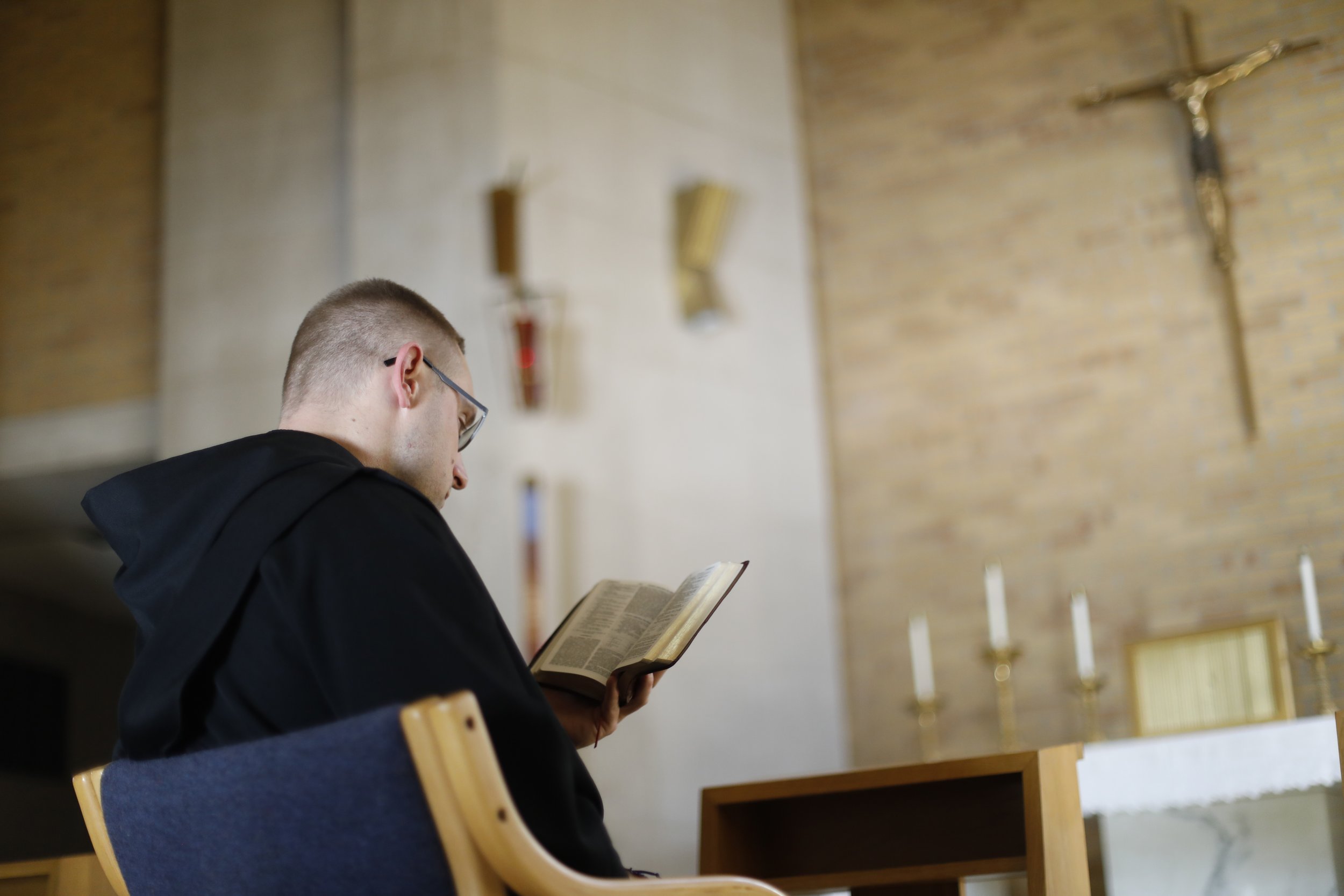
lectio divina
Long venerated in the monastic tradition of private prayer is the art of lectio divina. St. Benedict, in his Rule, legislates that the monks ought to have periods of time to practice this discipline. At St. Benedict's Abbey, twice a day space is created in our schedules to stop our work, collect our energies, and turn to God in prayer with Sacred Scripture.
For spiritual reading I have been revisiting one of my favorite monastic books, The Path of Life, by Fr. Cyprian Smith. In his chapter on prayer he makes an provocative statement: “What we are trying to build in our prayer is a relationship, and that is not a matter of technique but of love, trust, surrender and giving. Otherwise what we are calling prayer is simply a kind of mental therapy,” (100). I think this is a profound clarification for those of us who are steady and committed pray-ers, and a solid, guiding principle for those who are beginning to pray. Our prayer must be all about an encounter. If we are not making of ourselves an offering to another in our prayer, then our efforts have more to do with psychological health and mental well-being than meeting the living God. Prayer, of whatever variety, is firstly an act of communion with the God who has created and redeemed us—and that must be our experience of it.
That being said, different techniques and methods can help us wade into these deep and (sometimes) intimidating waters. A particularly daunting proposition for many is to spend extended time alone with God in silence. What do I do for my weekly Holy Hour before the Blessed Sacrament? How do I know that I am listening to God? How does God speak? Just how is prayer an encounter? An ancient monastic practice of mental prayer is called Lectio Divina, or reading the Scriptures in order to encounter God – specifically to listen to His voice. I offer you my own method for praying with scripture:
After calming my mind and heart, clearing out all the other concerns and anxieties, I call down the Holy Spirit and request of the Lord, “Teach me how to pray!” Then, I read a selected passage one time at an unhurried, careful pace, pausing to let individual words and phrases stick out – let the words puncture me. When the first reading is complete, I ask, “What is the moral of the story? What dogma or doctrine is being communicated literally? What is the message of this passage?” Then I read the same passage a second time, with the same attention and care. After this second reading, I begin to apply the “message” of the passage, as well as any new insights from the second reading, to my own daily life. Each of these periods of meditation should take about five minutes. Finally, I read the passage one more time. After this reading, I shut my Bible, turn my mind’s eye to gaze at the Lord, and begin to speak. Whatever I have been meditating about up to this point is good content for a conversation. I speak, then listen, and speak again, and listen again, letting the interaction unfold naturally, not forcing it.
This manner of prayer, Lectio Divina, has the great benefit of using Scripture as it is intended: to bring each human person into contact with the life of the Holy Trinity. As the Catechism says in the very first paragraph, “God [ . . . ] in a plan of sheer goodness freely created man to make him share in his own blessed life.” All that the Holy Church offers to us: the sacraments, the ecclesial life, the doctrinal guidance, the liturgy, and, of course, the rich tradition of private prayer – is developed for this purpose. These bring us into contact with God. May we commit to daily prayer and find our lives enriched and expanded by our encounter with Jesus.
By Prior Leven Harton, OSB
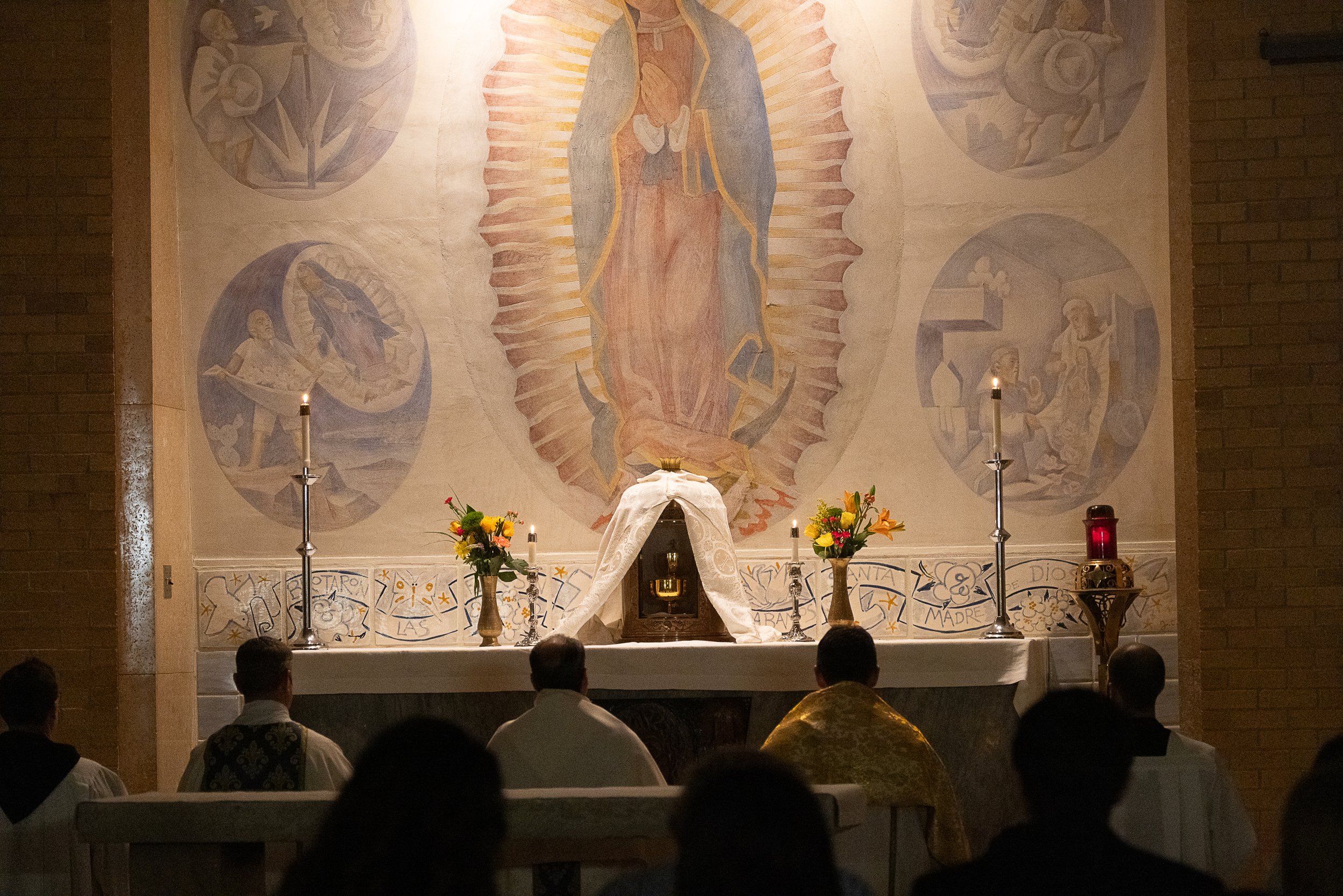
silence
In his Rule St. Benedict directs us to cultivate silence at all times. It is in silence that the Father speaks to us.
Silence prepares the heart to listen to God in the midst of a noisy world. Silence also prepares us to enter into His heart, for He loves in silence.
Silence can be loud, magnifying the activity of the Lord’s presence within us and magnifying everything in our hearts, helping us to sift the wheat and the weeds.
Silence is not quietism; it is rather resting in Him. For what effect could the storm around us have, if we rest beside Him asleep in the boat?
There is a mortal silence, the silence of the tomb, in which the earth quakes and Christ descends to the dark depths of the human heart, to love us and to raise us up with Him. Love always resurrects.
St. Joseph gives us the example of heroic silence, bowing before the Majesty and doing His will without complaint.
By Father Jay Kythe, OSB
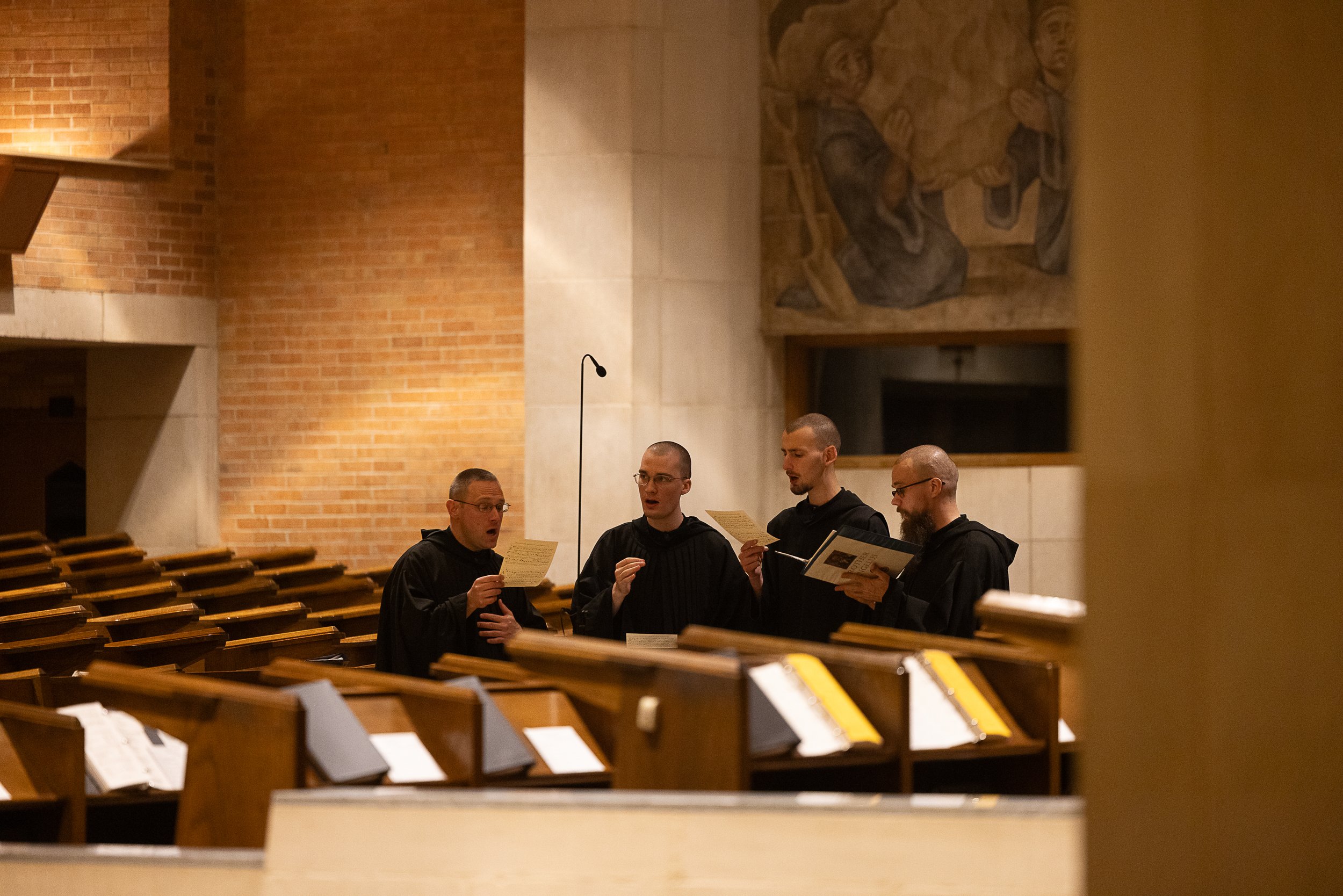
gregorian chant
He is in a conversation with God because the texts of Holy Mass are not theatrical scripts or anything like them, but prayers, thanks to which, together with the assembly, I speak to God.
It is important, therefore, to enter into this conversation. St Benedict in his "Rule" tells the monks, speaking of the recitation of the Psalms, "Mens concordet voci". The vox, words, precede our mind. This is not usually the case: one has to think first, then one's thought becomes words. But here, the words come first. The sacred Liturgy gives us the words; we must enter into these words, find a harmony with this reality that precedes us.
By Pope Emeritus Benedict XVI, Meeting of His Holiness Benedict XVI with the Priests of the Diocese of Albano
